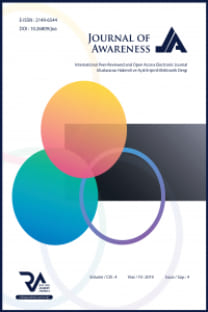Türk Dilinde ve Atasözlerinde Güzellik Algılanışı
Her dilde belli bir kelime dağarcığı vardır. Her dilde belli kelimelerin ve kavramların rolü, diğerlerinden daha farklıdır. İnsan sadece yaşadığı kültür bakış acışından dildışı olanlara isimleri koyar. Bir olgu, ya da tavır diğerlerinden daha büyük önem taşırsa daha ayrıntılı bir şekilde adlandırılır. Bu şekilde yakın anlamlı, en küçük ayrıntıyı vurgulayan, farklılıkları işaretleyen kelimeler ortaya çıkar. Bu kelimelerin ise hem günlük konuşmalarda hem edebiyatta kullanılışı, getirilen çağrışımları bir kültürde büyük önem taşımaktadır. Ancak bazı kavramlar sadece bir topluluğa bir kültüre ait değil, onlar dünya çapında bütün insanlara aittir. Yine de evrensel olsa da her kavramın farklı dilde farklı algılanışı olabilir. Bu çalışmada Türk dilinde ve atasözlerinde güzellik kavramının algılanışını nasıl olduğu açıklanmaya çalışılacaktır.Türkçe sözlüklerinde güzel kelimesinin birkaç anlamı vardır. Aynı zamanda güzel kelimesi birkaç deyim ve atasözü oluşturmaktadır. Bu çalışmanın amacı bu kelimenin kullanıldığı bağlamından güzel ve güzellik kavramının algılanışlarını orataya koymaktır.
Anahtar Kelimeler:
Türk Dili, Türk Atasözleri, Güzellik Algılanışı
THE PERCEPTION OF BEAUTY IN TURKISH LANGUAGE AND PROVERBS
Each language has its own vocabulary. Each word and concept has a meaning differs from other ones, meaning. People give names only to these phenomena which they found important from the point of view of their culture. If a fact or behavior with regard to an action or event in the world is more important than others, it is given a more specific name. In this way, words of close meaning occur, so called nearsynonyms which highlight the smallest details and emphasize the differences. These words are used both in daily conversation and in literature. The connotations they bring are of great importance in a given culture. However some concepts do not belong to one single culture or community, they belong to all the people around the world. Although they are universal, they may be perceived differently in different languages. Consequently, various perceptions of very similar phenomena can be found in different languages and cultures. In this study, the perception of the concept of ‘beauty’ in the Turkish language will be presented. This analysis is based on Turkish vocabulary (single words as well as collocations and phraseological expressions which include them) and proverbs (representing the cultural essence of the community using this language) which refer to ‘beauty’. Beauty can be perceived in many different ways, because every person has their own taste. Firstly, we should mention physical or spiritual beauty. Secondly, each period, each era has different tastes. This study will not examine fashion and temporal, time-varying beauty. (It can be done by researching literary works written in different periods.) In this paper the word ‘beauty’ will be examined in detail from the point of view of its dictionary definition, through compound words,phraseological expressions, and the manner in which it is interpreted from the socio-cultural viewpoint. The perception of ‘beauty’ in the Turkish language and culture will be revealed by examining proverbs as one of the oldest literary products of language and culture. Proverbs express the views of the world show the value system of the community which speaks the language. Furthermore, various types of beauty are specific to given cultures. Moreover, some beliefs are connected with those beauty types. In Turkish language dictionaries there are 12 meanings of the word ‘beauty’. Moreover, this word constitutes a few idioms and is part of some proverbs. The purpose of this study is to show the perception of the concept of beauty according to the context in which it is used.
Keywords:
Turkish Language, Turkish Proverbs, Perception of Beauty,
- ISSN: 2149-6544
- Başlangıç: 2016
- Yayıncı: Rating Academy
Sayıdaki Diğer Makaleler
DRAM SANATINDA TEKİNSİZ GÜZEL VE HAROLD PINTER’IN “KOLEKSİYON” ADLI OYUNUNA YANSIMASI
Güzeli Arayışta Kadın İmgesi, Şiddet Teması ve Polyxena'nın Çağdaş Seramik Sanatına Yansıması
Münevver Berrin KAYMAN KARAGÜL
Gündelik Yaşamın Güzellik Algısı'nın Tiyatroda Eleştirisi: Çirkin
Güzel, Özgün ve İyi Yemeğin Peşindeki Yolculuk: Gastronomi
Serdar SÜNNETÇİOĞU, Ferah ÖZKÖK
DRAM SANATINDA TEKİNSİZ GÜZEL VE HAROLD PINTER’IN “KOLEKSİYON” ADLI OYUNUNA YANSIMASI
BALKANLAR’DA TÜRK DİLİNİN YAŞATILMASINDA “PRİLOZİ” VE “BEHAR” DERGİLERİNİN ÖNEMİ
Özlem TONGUÇ YAYINTAŞ, Latife Ceyda İRKİN
"Seramik Tasarımında Güzeli Arayış Sürecinde Yerel Değerlerin Esin Kaynağı Olarak Kullanımı"
